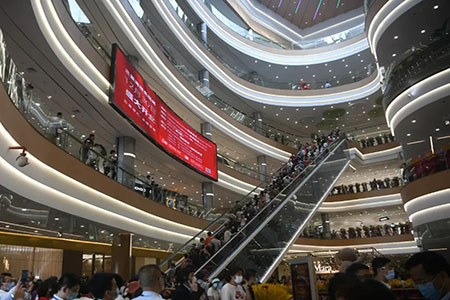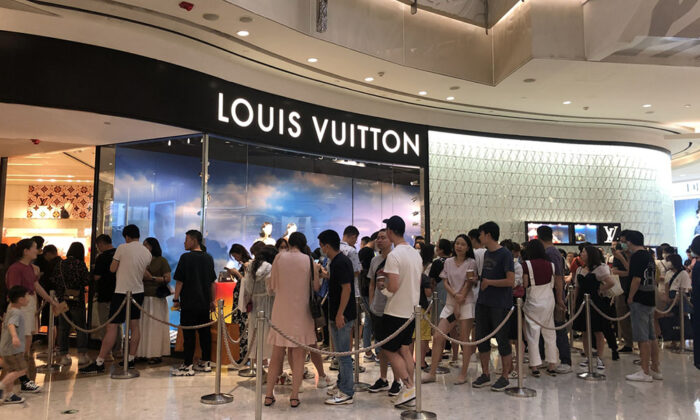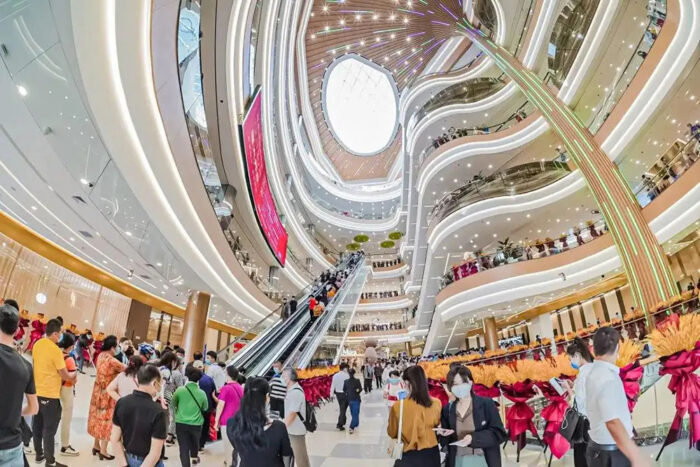



The China luxury market continued the high double-digit growth trend in 2021. The majority of Chinese consumers still choose to purchase luxury goods domestically due to Covid-19 restrictions on outbound travel, according to Bain company’s 2021 China Luxury Market Report released on Jan 20. Thanks to this, after achieving 48% growth in 2020, China luxury market is expected to achieve 36% growth in 2021, reaching nearly 471 billion yuan (around USD 75 billion), nearly doubling the overall amount of 2019, with some brands growing by more than 70%. In addition, the potential of duty-free shopping in Hainan and the gradual progress of digitization have further boosted the growth of luxury goods consumption in China.

The difference between brands is obvious. The growth rate of leather goods reaches about 60%.
As in 2020, the growth of China luxury market varies markedly between brands, with growth ranging from 10% to more than 70%, the report shew. Growth rates vary widely among different categories. Leather goods had the highest rank with sales growth of about 60%, followed by fashion and lifestyle categories with growth of about 40%. Although the growth rate of jewelry category was not as high as 2020, it still reached about 35%. High-end watches and luxury cosmetics are expected to grow by around 30% and 20% respectively.
“Globally, China will have around 22% share of global luxury consumption in 2021, up from around 20% in 2020,” said Bruno Lannes, Bain’s senior global partner of the report. We expect this growth trend to continue into the future, and regardless of how outbound travel recovery progresses, China is expected to become the world’s largest luxury market by 2025.”
However, the market performance in the first and second half of 2021 is extremely bifurcated: the growth of major categories in the first half of 2021 is fast, with year-on-year growth ranging from 40% to 100%, while the growth of some brands in the second half is expected to decline from 0% to 25%.

Hainan duty free shopping mall have accounted for about 25% of the total sales of luxury beauty official channels
The report identifies three trends shaping the future of China luxury market. Most of these three trends are driven by the acceleration of the growth engines in the 2020 report, offering deeper implications for individual luxury brands.
The first trend is duty-free shopping mall in Hainan island. This is one of the emerging luxury consumption destinations in 2019, with the sales growth rate exceeding 120% in 2020. Duty-free shop sales in Hainan are expected to grow about 85% to about RMB60 billion (around USD10 billion) in 2021, accounting for about 5 percentage points of total sales growth in China’s domestic luxury market. Personal luxury goods account for about 95% of sales in Hainan duty free shops, with more than 50% of sales coming from luxury cosmetics. Bain believes that with the arrival of more duty-free merchants, Hainan island’s retail consumption potential will be further released.
The more tax-free carriers and consumers can choose from, the more price competition there will be. The report estimates that Hainan duty free shop sales in China’s luxury beauty official channels of the total sales have reached about 25%.
For the beauty market, Hainan is just one pricing disruption affecting Chinese consumers’ shopping habits. In 2021, the role of shopping agency is also gaining prominence, driven by other travel retail operators.
Online sales of personal luxury goods in China are expected to grow by about 56%.
The second trend is further digital development. The digitization of the Chinese market is already at a high level and is improving day by day, and the COVID-19 pandemic has further accelerated the process of digitization development in China. As a result, even though physical stores remain the primary channel for brand building and purchase conversion, many marketing and consumer operations have gradually moved online. Online luxury sales in all major categories are growing faster than physical store sales, with the report predicting that personal luxury sales in China will grow about 56% online, compared with 30% physical sales.
Excluding the sales of duty-free shops in Hainan, the online penetration rate of China luxury market as a whole will reach about 19% in 2021. If the online penetration rate of Hainan duty free shops is included, the overall online penetration rate of China’s luxury market will reach nearly 26%.
China’s personal luxury consumption is expected to return to the level before COVID-19 pandemic by the end of 2022 at the earliest
The third trend is the continued backflow of consumption. In 2020, the Chinese market accounted for 70 to 75 percent of Chinese consumers’ global consumption of luxury goods, a record high, due to the disruption of outbound travel caused by the Covid-19 pandemic. In 2021, thanks to the continuation of the consumption backflow trend, the proportion further rose to more than 90%.
After 2022, brands should expect international travel to be liberalized, driving price convergence across markets. But in the short term, Bain believes overall growth in personal luxury will remain low in the double digits in 2022. Compared with the situation in 2021, the growth rate is expected to be relatively slow in the first half of 2022, and the growth will be concentrated in the second half.
Chinese consumers’ personal luxury consumption is expected to return to the level before Covid-19 pandemic between the end of 2022 and the first half of 2023, as international travel from Asia to the world is gradually liberalized against the backdrop of continued consumption repatriation.